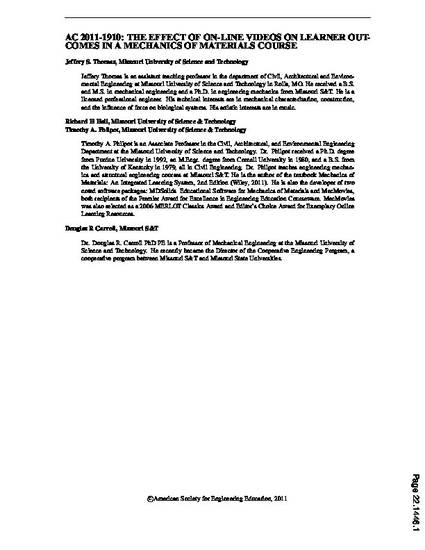
The Mechanics of Materials course is one of the core engineering courses included in the curriculum of mechanical, civil, mining, petroleum, marine, aeronautical, and several other engineering disciplines. As a core course, the Mechanics of Materials course typically has large enrollment. Initiatives aimed at improving the effectiveness of the engineering core courses can have a major impact on engineering education by virtue of the large number of students affected.
Computers afford opportunities for creative instructional activities that are not possible in the traditional lecture-and-textbook class format. The study described in this paper examines the effectiveness of asynchronous online video that has been used in various ways in a Mechanics of Materials course over the past four years. The content delivered via the Internet included concept videos, problem-solving videos, and videos of demonstrations and laboratory activities.
In this study, four differing approaches to present the Mechanics of Materials course to approximately 1000 students in 17 course sections over a four-year period were compared. The first approach involved traditional, face-to-face lectures. The second approach completely replaced the face-to-face lectures with videos recorded by the instructor outside of the classroom, but covering the same topics as the classroom lectures, and then posted to a class web site. The instructor was available in his office during class time to answer questions. The third approach combined face-to-face lectures with videos. The fourth approach was an inverted format where students watched videos at home and worked on homework during class.
Using common final exam scores as a quantitative measure of effectiveness, results showed that overall student performance was maintained as class sizes and instructor workloads increased. Additionally, there was some indication that the inverted approach was better suited for higher-ability students.
Available at: http://works.bepress.com/jeffery-thomas/8/
